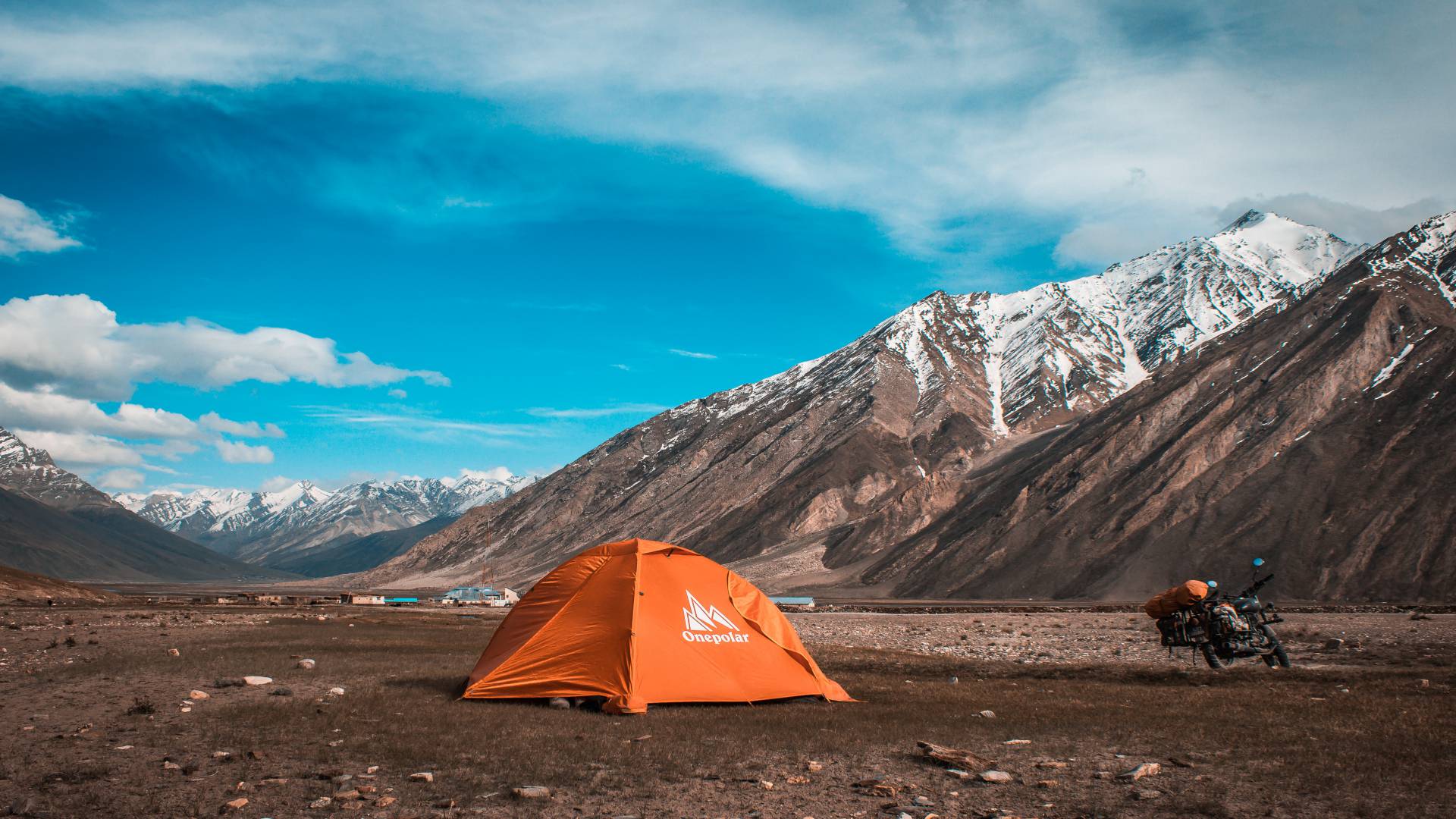
Since forever tents have been synonymous with adventure. For a whole lot of us, the best part about hiking trip is living in tents. Right from laughing the night away with your buddies to snuggling up in a warm sleeping bag and trying to catch a sight of a shooting star, all of this happens in those cozy tents! So if you are planning to go on a hiking trip and not sure what tent works best for you, well we are here to help. Here’s everything that you need to understand about buying and repairing tents.
Basic structural pieces of a tent:
» POLES
These are the most important aspect of tent structurally. They eventually are what makes any tent stand. If a single pole stands at the centre of the tent its called pyramid tent. If a single horizontal pole runs across the roof, it is a ridge tent. But nowadays tents with connector-poles are available. The entire pole is cut into sections (connected by shock cords) that have to be connected together and then pass the poles through loops to set up the tent. Poles can be made of aluminium or fibreglass. Aluminium is strong but heavy. Fibreglass tends to break but is absolutely lightweight. Go for aluminium ones if you are buying large tents.
» FLYSHEET
It’s also called as rainfly. In simplest language, it’s a tent for your tent. In fact, for a short break, you can pitch just the flysheet instead of pitching the entire tent. These are important because the gap between tent and flysheet help maintain air circulation in the tent. Secondly, they protect your tent in rain. and lastly, if your flysheet is little bigger than your tent it acts like veranda for your tent where you can leave your shoes and backpacks.
» MESH PANELS
These are the windows of your tent. They also act as ventilation vents preventing condensation in your tents. So if you are going in a non-rainy area, it would be luxury to night gaze the stars from top mesh panel while sleeping in your tent! Even if you are going in a rainy area, you can keep mesh panels open as long as you have a flysheet covering your tent. This will maintain the air circulation in your tent. In case you don’t have a flysheet, structured vents are a better choice.
» FLOOR
Most tents come with floors (except maybe ultra light ones). Make sure you use ones that have floors made of durable material. And it’s absolutely essential to make sure that the ground you choose to pitch should be as flat as possible. No rocks, stones should be there. Else you’ll end with a tear in your tent plus a-princess-and-a-pea experience through the night.
» DOOR
So there are three options usually available. One (side) door tent, two (side) door tent or a front entry tent. This absolutely depends on your comfort factor. But if you are buying a two or a three-person tent, go for two doors otherwise you’ll have to crawl over each other every time anyone wants to go out.
» GUYLINES AND STAKES
These are the pitching tools of your tent. Guy-lines are a long nail (or screw) like object and stakes are loops of ropes attached at various points on your tent and flysheets. You pitch the stakes using guy-lines. Make sure there are sufficient stakes all around the tent. Because these prevent your tent from flying away or collapsing. In short, they are the stable points of the tent.
Here are some quick points to remember while buying tents:
› Size
How many person tent do you need? (two person, three person, four person or a family tent) Also, you can buy a three-person tent for two of you if you wish to have spacious stay.
› Height
Make sure you set up the tent and get yourself acquainted with the dimensions of the tent before buying it. Else you might end with a tent that grazes your head every time you sit up in the tent.
› Tarp sheets
These are an absolute must. Pitch your tents on tarp sheet. These sheets are washable and prevent your tent from getting dirty. Plus they protect your tent from getting punctured.
› Time
If you are going to spend more time in a tent then make sure you prioritise comfort and space over everything else. But if the tent is going to spend more time in your bag, choose for something that’s easy to pitch and manage.
› Weight
If you are carrying your own tents while hiking make sure you choose the lighter options. In case you are traveling by car then you can go for more elaborate tents.
› Seasons
Although most tents work for every season but minor aspects and add-ons might provide a particular advantage like the structured vents are particularly helpful in case of rains.
Some quick fix tips that might help you in case your tent needs some minor repairs:
Χ Broken zipper?
Try aligning the zippers with pliers or nails. If it works then fine, if not send it in for repairing.
Χ Stuck zipper?
Try rubbing wax/candle. This will smoothen the stuck zipper.
Χ Torn fabric?
Try patching the hole on wall/floor/ flysheet with a round piece of duct tape. Send it in for repairing once you are back.
Χ Broken shock cord?
Detach the two sections of the pole and tie together the cord. Once you are back replace it.
Χ Missing guy-line?
Use a heavy rock, loop the stake around it and voila your problem is fixed.
Well, that’s all folks. We hope that your adventure goes as smooth as you planned! And in case you don’t want to fall into the hassle of planning and buying tents, we will be more than happy to help you! Let us know in comments!




